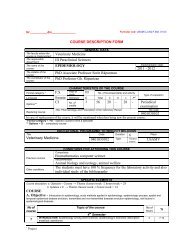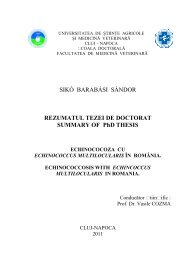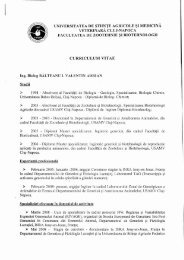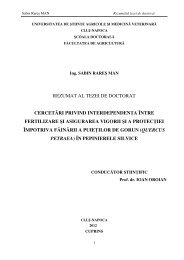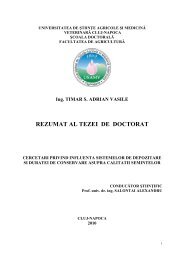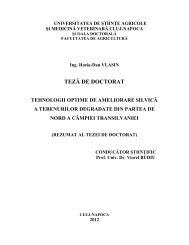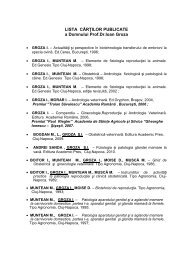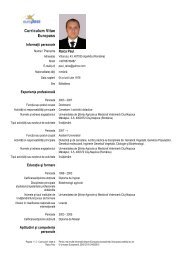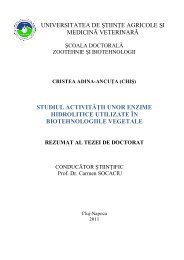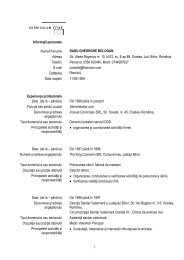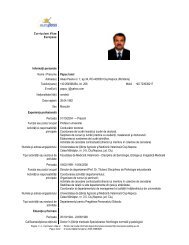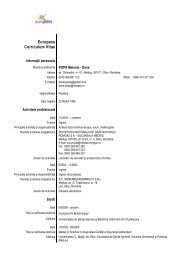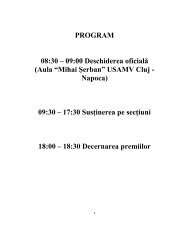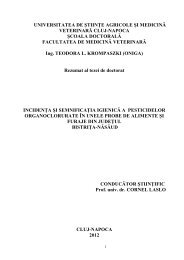Rezumatul tezei de doctorat - USAMV Cluj-Napoca
Rezumatul tezei de doctorat - USAMV Cluj-Napoca
Rezumatul tezei de doctorat - USAMV Cluj-Napoca
Create successful ePaper yourself
Turn your PDF publications into a flip-book with our unique Google optimized e-Paper software.
We used a comparatively mixture of two primer pairs, in the following combination:<br />
ITS1 with ITS4 and ITS4 with ITS5. ITS1 primer is attaching at the 3’ end of the 18S rDNA<br />
gene and ITS4 primer is at the 5’end of the 28S rDNA gene (after Paul B. And al., 2004).<br />
The last combination of primers is used to amplify the region of the rDNA repeat unit that<br />
inclu<strong>de</strong>s the two non-coding regions <strong>de</strong>signated as the internal transcribed spacers ITS1 and<br />
ITS2, and the 5,8S rDNA gene (Llanos Frutos and al., 2004).<br />
I.3.8. Molecular techniques used in the experiment<br />
I.3.8.1. PCR amplification of Saprolegnia samples<br />
In our experience we used ITS1 and ITS4, ITS4 and ITS5 primer pair combinations<br />
(White and al., 1990), which amplify ITS1 region, 5,8S rRNA gene and ITS2. The<br />
amplification reactions were individually performed, in a final volume of 25 µl, with an<br />
Eppendorf thermocycler.<br />
The amplification cycling parameters were: initial <strong>de</strong>naturation at 95°C for 3 minutes,<br />
followed by 35 cycles of <strong>de</strong>naturation at 94°C for 1 minute, annealing at 55°C for 1 minute,<br />
and extension at 72°C for 1 minute, with a final extension at 72°C for 7 minutes. The<br />
amplification products were separated by electrophoresis in 1,5% agarose gels, in 1x TBE<br />
buffer, for 60 minutes at 70V. The DNA was stained with Sybr Safe (Invitrogen) and<br />
visualized un<strong>de</strong>r UV light. The gel was photographed and the image recor<strong>de</strong>d on the<br />
machine (Biorad).<br />
The lengths of amplification products were estimated by comparison to a DNA<br />
Lad<strong>de</strong>r Low Range (700 bp) or 50 bp (Fermentas) (adapted after Ristaino and al., 1998).<br />
We tested another amplification method, which was performed in an Eppendorf<br />
thermocycler, after the following protocol:<br />
- initial <strong>de</strong>naturation: 5 minutes at 95°C<br />
- 35 cycles: - <strong>de</strong>naturation 30 seconds at 95°C<br />
- annealing 30 seconds at 48°C<br />
55



